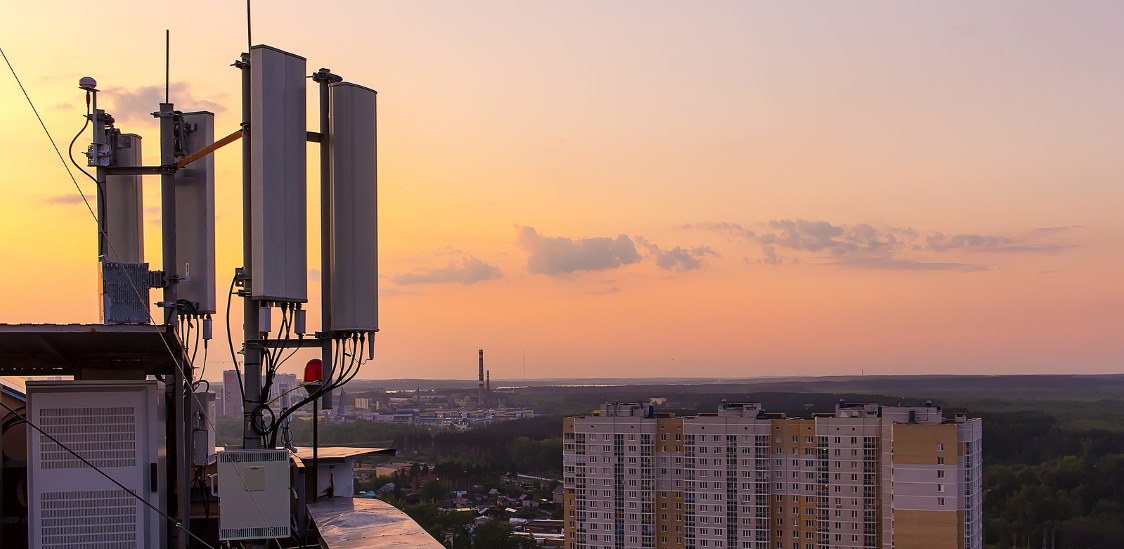Of all the industries around the world, it’s arguable that few are as integral to India’s economy as the telecommunications industry.
Over recent years, the nation has established itself as one of the world’s largest and fastest-growing bases of digital consumers, buoyed by strong broadband connectivity. This has acted as a springboard to an unrivalled explosion in online ecosystems, giving rise to companies such as Flipkart, Swiggy and Ola. These organisations are just a handful of those which have spearheaded economic prosperity; according to industry estimates, India’s consumer digital economy is expected to reach a value of $800 billion by 2030, marking a tenfold growth from 2020.
Put simply, India has truly embraced the digital way of doing things - be it online shopping, cashless transactions, telemedicine or online learning – and this is just the beginning. The simple fact that the world's most populous country is using digital voting machines to elect its government speaks volumes about its journey.
For any other nation with similar aspirations, there are plenty of lessons to be learned from India; not least how it’s bringing universal access to internet connectivity to power one of the world’s fastest growing economies. The reality is that the journey hasn’t been easy, and the progress of India’s digitisation has been patchy. Across the vast country, a stark digital divide emerged, particularly between rural and urban areas. While work is being done to close it, it has remained stubborn. According to figures from the National Sample Survey Office (NSSO), under one in four (24%) rural Indian households have access to the internet, compared to two thirds (66%) in cities. Further, a reported 56% of the population in both urban and rural areas regularly experience connection disruptions and speeds lower than promised or paid for – a problem for connected households everywhere.
In the dawning era of a digital-first nation, the pace of change must continue to increase. Not only is reliable connectivity now integral to a citizen’s day-to-day life, but its absence jeopardises the success of the government’s ‘Digital India Initiative’. With 700 million citizens still living in digital darkness, a new saviour has stepped up to close the gap.
Enter mmWave FWA
The brightest hope on the horizon is millimetre wave Fixed Wireless Access (mmWave FWA) technology. This cutting-edge solution is now delivering high-bandwidth connectivity to underserved areas, crucially without the prohibitive costs of fibre deployment. Compared to previous wireless generations, mmWave offers fast data rates, ultra-low latency, and vastly higher bandwidth capacity.
The technology gained significant momentum in 2023. Reliance Jio, India's largest telecom operator, spearheaded the mmWave revolution with its new AirFiber service. Having already gone live in eight major metros including Delhi and Mumbai, AirFiber leverages mmWave to circumvent the connectivity bottleneck of that final fibre stretch into homes – radically boosting broadband performance.
In India's expanding suburbia, mmWave has delivered the robust speeds and responsiveness essential for seamless home connectivity. It presents a starkly more affordable alternative to the capital-devouring fibre rollout model, whilst netting an essentially identical world-class experience. This unbeatable cost-value proposition makes mmWave FWA technology the quintessential solution for emerging economies like India, enabling a rapid, cost-effective expansion of premium broadband into underserved areas previously stranded on the wrong side of the digital divide.
Lessons from Reliance Jio's pioneering AirFiber rollout
A notable aspect of Reliance Jio's mmWave strategy is their decision to deploy it across rural, urban and suburban areas. While the technology's ability to bridge the rural digital divide is well-recognised, Reliance Jio's approach of using it to complement existing urban broadband infrastructure is a novel approach that other markets can learn from.
By leveraging mmWave FWA's high bandwidth and low latency, Reliance Jio has provided a faster and more reliable alternative to traditional broadband services in densely populated areas where demand often exceeds supply. This not only improves the overall broadband experience for urban and suburban users but also helps alleviate network congestion issues that many cities face.
Reliance Jio's approach contrasts with the more conservative deployments seen in developed markets like the United States. Telecom providers there have invested heavily in laying fibre optic cables to homes and businesses in major metropolitan areas over the past decade. With high-speed fibre already established, mmWave FWA deployments in the US have been complementary – filling remaining coverage gaps or augmenting capacity, rather than fully replacing legacy networks as Reliance Jio could across India's urban and rural landscapes.
On the other hand, fibre deployments are not feasible in some countries – only more developed nations can realistically invest in widespread fibre rollouts. For many emerging economies grappling with limited resources and infrastructural challenges, the high capital expenditure required for trenching fibre networks acts as a significant barrier. This is where Reliance Jio's adoption of mmWave FWA could serve as a blueprint for other emerging, digitalisation-focused nations. By circumventing the need for costly civil works through a wireless last-mile solution, these countries can rapidly extend high-speed broadband access to underserved populations.
Reliance Jio's AirFiber rollout proves mmWave FWA can narrow digital divides, as well as underscores its potential. For emerging economies with waning infrastructure, Reliance Jio's model offers a roadmap other nations must heed lessons from. By adopting a wireless last-mile solution like mmWave FWA, nations can affordably and rapidly extend high-speed internet access to underserved populations without the capital intensity of wired deployments. With the success of its mmWave FWA rollout, Reliance Jio has demonstrated exactly how powerful ubiquitous digital inclusion is for economic development.























